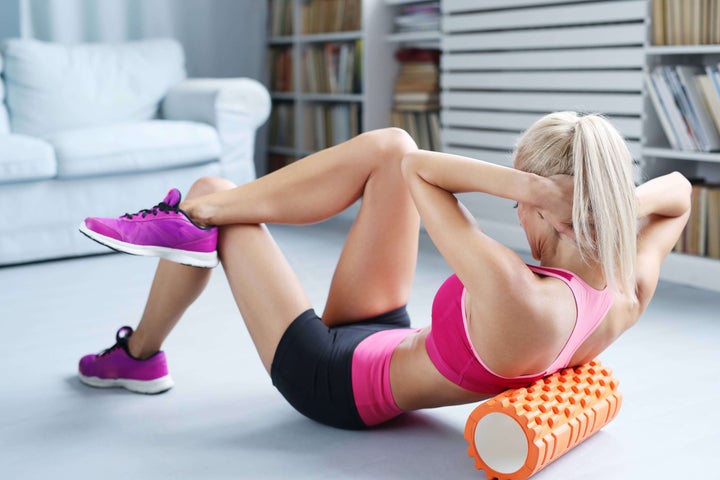
In 2016, nearly 31 million Americans suffered from back pain. A number that large can certainly make you wonder why so many people are experiencing it and what is the underlying cause.
The truth is that there is no single reason as to why people suffer from back pain, and the causes can often be complicated and multi-faceted. However, there may be a universal way to manage general discomfort of the upper and lower back: the foam roll.
What is foam rolling, and how does it work?
Known as a form of myofascial release, a foam roll is exactly what it sounds like: a cylindrical piece of hard foam that can be rolled on the skin.
Myofascial tissue is another name for the connective tissue located around the muscles. These areas are often the sources of painful knots. In some cases, they can require massage or physical therapy to be relieved.
With foam rolling, you’ll be able to position yourself on the roller and apply gentle sustained pressure on the myofascial tissue. The goal of this is to both eliminate pain and restore motion. When done properly, foam rolling provides a variety of benefits for those experiencing myofascial pain, including:
- Breaking down painful knots/tender areas
- Increasing blood flow/circulation
- Increasing strength/flexibility
- Preventing tears/injuries
What is the proper way to use a foam roll?
Like any exercise, form is crucial to foam rolling. Not knowing the proper way to use it can result in further injury and a lot of pain. Before getting into the mechanics, there are a few key components to remember when using a foam roll:
Always consult your doctor first
Before doing any rolling exercise, it’s important to talk to your doctor, especially if you already have a back or spine condition. If your doctor gives you the all-clear, he/she can teach proper form and create a plan for treating tender areas in the back muscles.
Don’t focus too much on tender areas
It’s almost instinctual to roll on an area that feels tender or sensitive. If it’s making you wince, then try not to spend more than 15 to 30 seconds on that part of the back.
Don’t roll too quickly
It can be tempting to roll quickly in a back and forth motion when using a roll, but this is actually counterproductive to exercise. Try not moving more than one inch-per-second. Slower movements can allow muscles to adjust and relax with pressure.
Never sacrifice form or posture
By sacrificing form or posture, the proper muscles may not be getting used during the exercise. Even though it is not an intense workout, it can cause more harm than good if not positioned correctly on the roll.
Never roll directly on the lower back
When rolling on the upper back, the shoulder blades and muscles can protect the spine. The lower back is quite different. There are not nearly enough muscles to protect the spinal cord, so rolling on the lower back can cause what muscles are there to contract, leading to injury. A good reference point for where to stop rolling is at the end of the ribcage. To focus on lower back pain, try rolling on the hips or glutes as they are commonly a source of pain in that area.
With the right mindset and the right guidelines, foam rolling is easy and effective.
For the upper back, a light roll that starts under the shoulder blades and engages the core muscles is best. While getting into this floor position, be sure to keep the hips forward so that there is more pressure on the back between the shoulder blades. By rolling very slowly in a back and forth motion, you will be able to work out any knots or tight spots in the upper back area.
If pain is focused in the lower back, try rolling on the hips and glutes. If you have stiff hips, it can cause bending down to occur more in the waist, which can put more pressure on the lower back and lead to injury over time.
By laying on your side(s) with your feet together and rolling back and forth slowly and gently, you can work out any tight spots or tender areas in the hips. This can lead to relief from lower back pain and allow the hips to relax.
You are now on your way to releasing tension and relaxing muscles.